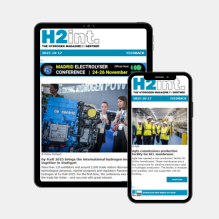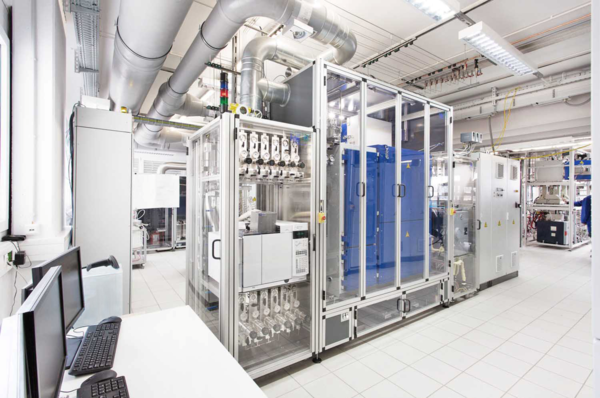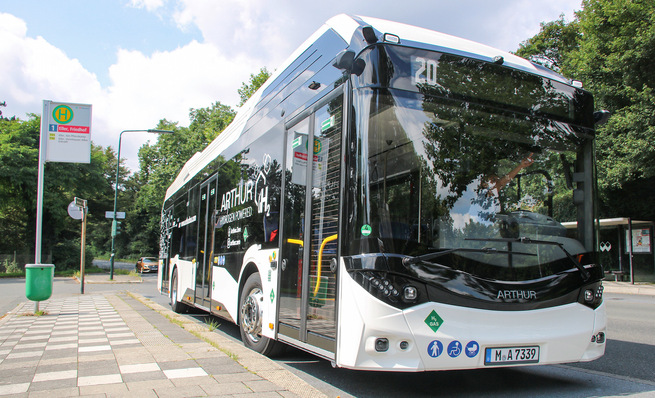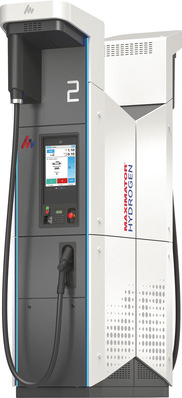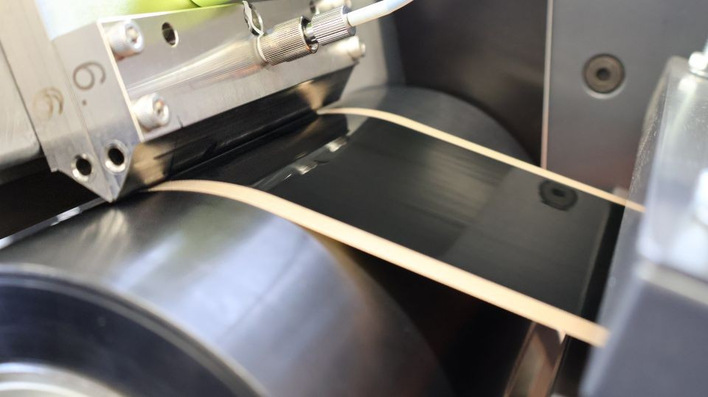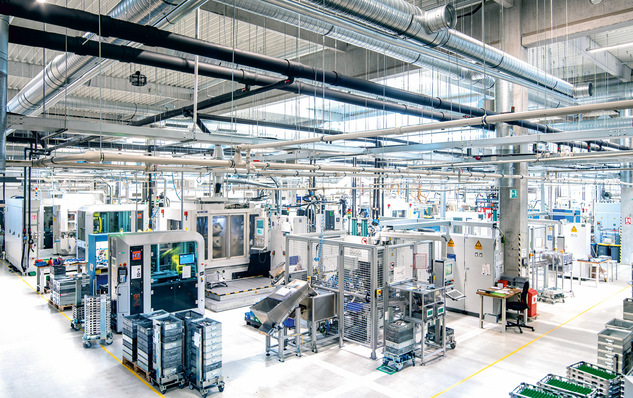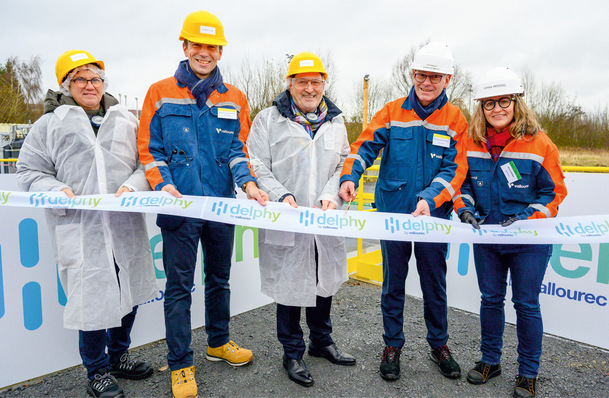In December 2023, the world still seemed in order. Symbio, the fuel cell joint venture of Forvia, Michelin and Stellantis, inaugurated its gigafactory SomphonHy in Saint-Fons near Lyon. Up to 50,000 fuel cell systems are to be manufactured there as part of the IPCEI billion-euro project HyMotive.
In July 2025, Stellantis changed its mind, deciding that its light commercial vehicles should run on batteries instead. The newly appointed Symbio CEO Jean-Baptiste Lucas now has to salvage what can still be saved: the remaining 640 jobs, contractual commitments, investments. As for the product, Symbio no longer wants to focus on 40 kW systems, but instead aims directly for 75 kW. The modules are intended for buses and for stationary applications such as data centers. From 2028, the next generation is to follow, with 150 and 300 kW output for heavy-duty vehicles.
The shift toward heavier loads and stationary systems is not limited to Symbio. Batteries have won the race in passenger cars and are advancing into higher power classes. Combined with tight public budgets and topped off by the return of climate change deniers in politics and business, this results in a precarious situation for fuel cell companies. It is a heavy blow for all those who have invested money and effort to scale the technology.
Compact, powerful, efficient
The industry is placing its hopes on niches not yet occupied by battery technology: heavy loads, high power, long distances, autonomous systems with high reliability. This is also where genuine innovations can still be found. Progress is being made in power density, vehicle integration, cost, and durability.
Take Symbio, for example. The new Stackpack 75 was already on display in February at the H2&FC Expo in Tokyo. With a volume of 268 L and a weight of 200 kg, it is relatively light and compact (0.38 kW/kg, 0.28 kW/L). For higher outputs, multiple stacks are to be combined modularly. According to the company, the stack is ready for series production in France.
Similar trends can be seen at industry leader Ballard from the USA. Its FCmove-XD system consists of one to three stacks, each with 120 kW, sharing a common DC output. According to Ballard, the new fuel cell is the smallest and lightest in its power class (0.36 kW/L, 0.48 kW/kg). The 240 kW version with its two modules is said to fit well into the engine compartment of a Class 8 truck – the heavyweight class of trucks in the USA, roughly equivalent to a 40-ton truck in Europe. The number of parts has been reduced by one third, production time by half. Peak efficiency exceeds 60 percent, and thanks to the new “hot stand-by” mode, faster acceleration is possible. The integrated power controller is designed to manage all system operations. In general, the system architecture around the fuel cell and battery is considered critical to the success of fuel cell vehicles, as it accounts for 70 to 80 percent of the drivetrain cost and 30 to 40 percent of the total vehicle cost.
There is also news in the heavy-duty sector from EKPO Fuel Cell Technologies, the joint venture of Elring Klinger and OPmobility, in the form of the NM20 stack platform based on metallic bipolar plates. It is not yet available for purchase; A-samples have been delivered and are currently being tested. The system is expected to deliver up to 400 kW of power and currents up to 900 A, enabling integration into 800-volt vehicle platforms as used in high-performance electric vehicles. Backup systems for data centers could also be potential applications. For the development and commercialization of the NM20, up to EUR 177 million in subsidies are available until 2027 from the German Federal Ministry for Digital and Transport and the Federal State of Baden-Württemberg. The EU gave the green light by including the project in the IPCEI program Hy2Tech. The operating temperature is 95 °C (maximum 105 °C), and EKPO states an efficiency of 57 percent at nominal power. The interface to the vehicle is the “media module,” which also largely integrates the measurement and control technology. Power density is said to have increased by more than 50 percent.
Automotive industry keeps its options open
Among the car manufacturers, Hyundai continues to promote hydrogen loudly. The South Koreans presented the latest version of the XCient Fuel Cell in Anaheim, which, according to the company, was the first fuel cell truck in “mass production” back in 2020. The 180 kW fuel cell system has two stacks and, together with a 72 kWh battery pack, powers the 350 kW electric motor. Hyundai announced few technical innovations but used PR opportunities: with the fuel cell bus “Universe” as a VIP shuttle for the mega-project Neom in the Saudi desert, at the international ministerial conference Clean Energy Ministerial, and at the World Congress of Economists in Korea, where Hyundai presented the first complete redesign of its fuel cell passenger car Nexo in seven years.
The Daimler-Volvo joint venture Cellentric, on the other hand, is preparing for all scenarios. At the editorial deadline for this issue, in early September, Daimler had just celebrated the successful field test of the first five customers with the prototype of the Mercedes-Benz GenH2 Truck. By the end of 2026, 100 fuel cell trucks of the next development stage are to be delivered to customers. Like EKPO, Cellentric relies on a single stack. The system is expected to deliver up to 350 kW (over 500 hp) of continuous net power.
But will mass production really happen? In December 2024, Cellentric secured an option on a plot of land in Weilheim-Esslingen to ramp up production there – if the EU actually tightens its climate regulations, which could happen in 2030, “according to current estimates,” as it was stated. Until then, the company intends to proceed ““in a measured way”. Managing Director Lars Johansson moved to the Volvo Group in April.
Germany’s largest fuel cell manufacturer to date, Bosch, has discontinued production of its stationary SOFC fuel cells, although research is to continue for the time being.
The company plans to expand its PEM stack technology – but primarily for electrolyzers. At the Hannover Messe in April, Bosch presented a 2.5 MW electrolyzer in container format, built by Fest, featuring its Hybrion stack. The output per stack is 1.25 MW, with a production capacity of up to 23 kg H2 per hour. Even before the sales launch, Bosch had received orders for over 100 MW worth of stacks, and the first customer systems are expected to go into operation later this year. The stacks are manufactured in Bamberg. Bosch can leverage its experience from fuel cell stack production. For example, the company has developed a clamping tool to simplify and speed up manufacturing.
The PEM fuel cell can still be found in the Fuel Cell Power Module for mobile applications and in the BMG Power Generator. For mobile use, there are two modules with fixed outputs of 300 and 190 kW, as well as the scalable “Twinbox.” The BMG Power Generator is a container solution for power generation. At the Hydrogen Technology World Expo in Hamburg, Bosch Manufacturing is not focusing on its stacks, but rather on its water treatment systems. When searching for PEM fuel cells from Bosch, one mainly finds assembly solutions, coatings, and testing technology.
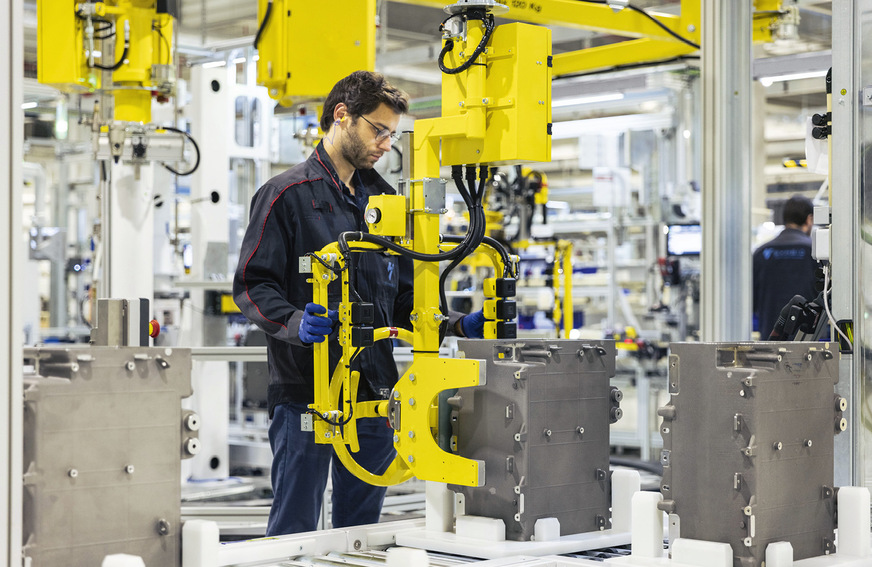
© Symbio
Quiet exits, unclear prospects
Some companies are quietly withdrawing. Toyota now only communicates about hydrogen in connection with combustion engine technology in motorsports. The last time the fuel cell passenger car Mirai made headlines was when Toyota provided 500 vehicles for the 2024 Paralympics in Paris. According to industry analysts, global sales of the Mirai in that year amounted to just over 1,700 units.
Fuel Cell System Manufacturing (FCSM), a joint venture of Honda and General Motors, opened a production facility in Michigan in 2024 and has remained silent since. Honda itself had planned to open a fuel cell factory in Japan but shelved the plans in June, despite already approved subsidies. Hyzon Motors from Illinois has made a clear exit. The company began producing fuel cells for trucks in fall 2024, but in spring 2025, shareholders approved the company’s liquidation. Proton Motor continues to operate on a small scale. The remaining employees are fulfilling existing orders, and occasionally new ones come in – the hope for an investor has not yet been abandoned.
Automotive is not everything
Nuvera, a subsidiary of forklift manufacturer Hyster-Yale from Massachusetts, is shifting its focus to stationary applications. The parent company has now definitively opted for batteries in forklifts. For reach stackers and terminal tractors used in container terminals, however, this is not an option. These high-performance vehicles with their long arms and grippers operate around the clock. Fuel cells are currently used only in two pilot projects, in Hamburg and Valencia, but work on the 125 kW system is continuing for now.
Nuvera has identified a new niche for its day-to-day business: decentralized, mobile applications. The PEM fuel cell systems in small trailers under the name Hydrocharge have been available since the end of 2024. A container-based charging platform for off-grid applications is also to be optionally powered by hydrogen, under the name Hydrocharge.
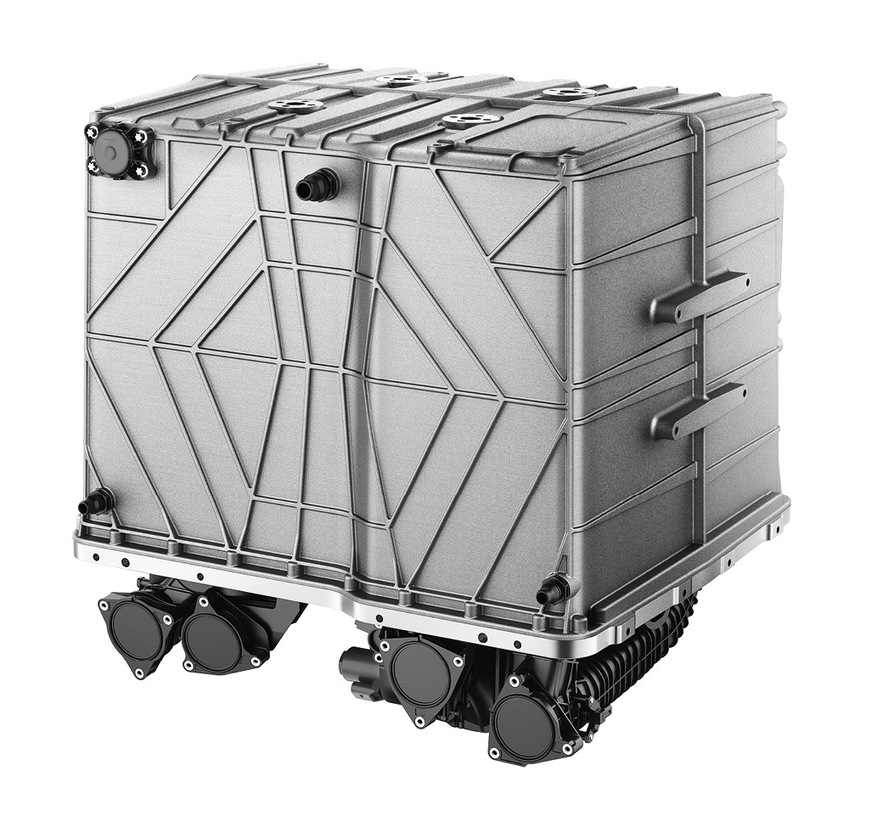
© EKPO
Off-grid and maritime
SFC Energy from Brunnthal near Munich, which has been manufacturing fuel cell systems for 20 years, reports plenty of orders. In September 2024, the company opened its production facility in Cluj, Romania. Full capacity of 3,000 fuel cell systems per year was to be reached by the end of the year, and 30,000 per year by the end of 2028. Using purchased stacks, the company builds systems for independent power supply, depending on the model powered by hydrogen or methanol, including devices under the Efoy brand. Many orders come from long-standing customers. Some equip military units, others operate surveillance cameras on construction sites or at borders. Numerous orders come from the USA, where SFC also has a production facility. The systems are quiet, lightweight, and low-maintenance – and when crises arise elsewhere, at least the security business remains secure.
The Swedish start-up and Volvo spin-off Powercell doubled its revenues in the second quarter of 2025, reaching nearly SEK 130 million (just under EUR 12 million). Powercell is also a system integrator and focuses primarily on maritime and stationary applications, using both hydrogen and methanol.
Most recently, revenue came mainly from license fees from a deal with Bosch to bring fuel cells to the Chinese market. Bosch is also Powercell’s stack supplier. Hitachi purchased the technology for its Hyflex platform, a hydrogen-powered shore power supply for ships. And an unnamed OEM from Italy wants to have a fuel cell system developed for maritime applications.
In short: the fuel cell industry must diversify – and is in the process of doing so.



